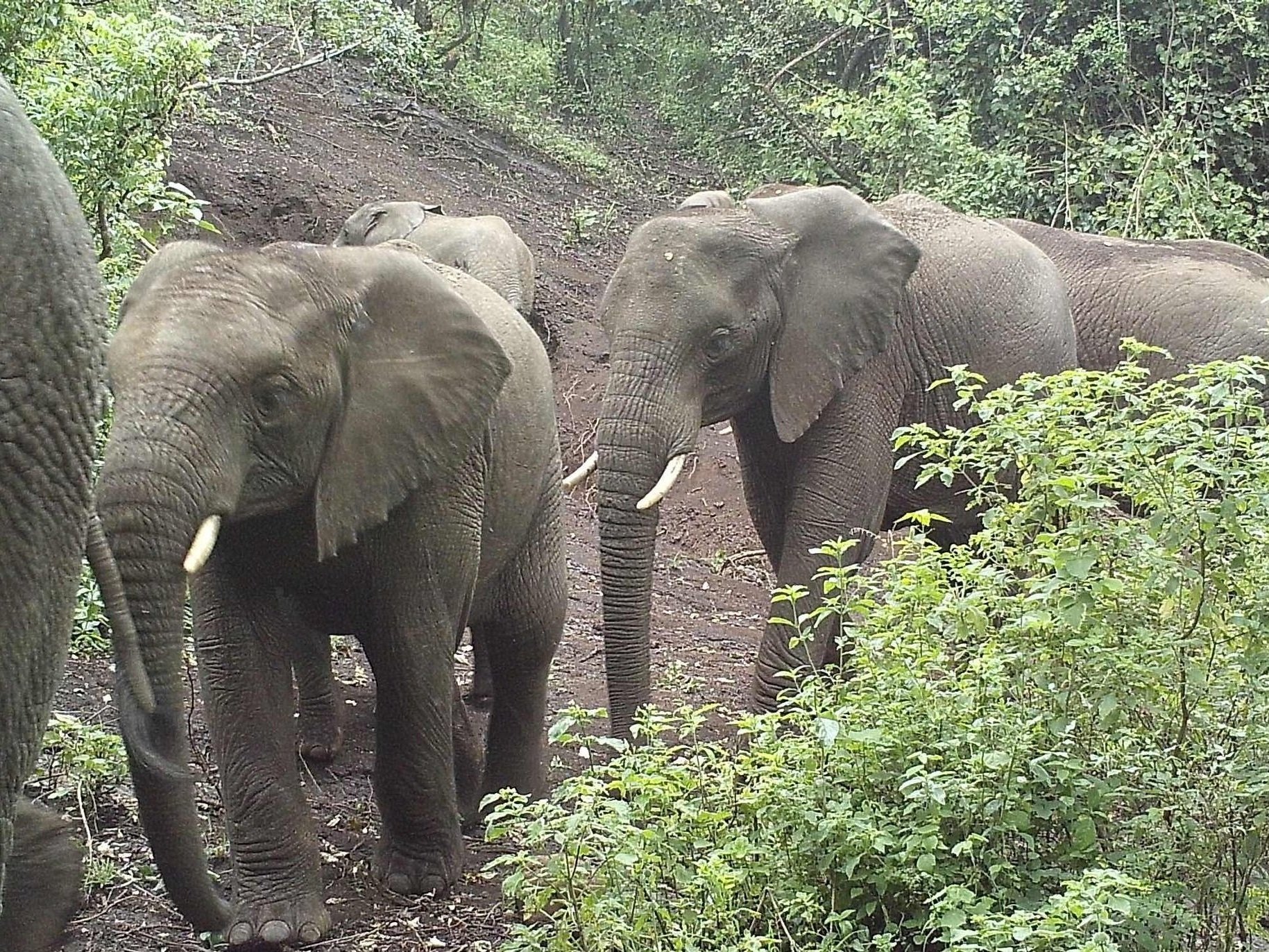
HUMAN AND ELEPHANT CO-EXISTENCE PROJECTS

Upper Kitete Beehive Fences
Project theme
Forging alliances between humans and elephants
Location
Upper Kitete Village, Mbulumbulu, Tanzania
Dates
Donor
Elephant Crisis Fund
Since 2018, Wild Survivors has partnered with PAMS Foundation to support Upper Kitete village with a farmer-managed beehive fence; an innovative and effective method to prevent elephants from raiding farmland that directly borders wild habitat.
Farms at the very top of the village run along a 2-metre wide fireline boundary that separates village land from the Northern Highlands Forest Reserve. The forest encircles the world-famous Ngorongoro Crater, a UNESCO World Heritage site home to around 1,000 elephants. Elephants would leave the forest on a nightly basis, to step directly onto farms, causing extensive damage to livelihoods by eating and trampling on crops, and costing farmers their profit to pay for farm guards, tractors and aggressive means of chasing elephants away night after night.

Crop raids down 70%
171 beehives
The project in numbers…
4.25km of fences
420 acres of protected farmland
554kg of honey harvested

The approach
Small blurb here
Project updates
Elephant crop-raids have reduced by 70% since the completion of the fence to meet the elephant corridor. We are now extending the beehive fence to support the neighbouring village of Kitete with 3km of crop-protection fencing.
From the first pilot fence of ten beehives on John Michael’s farm, to the 146 beehives extending the length of the fireline to meet the elephant corridor boundary, farmers have been actively engaged, providing crop-raiding alerts to our team, maintaining the fence with our Bee Guardians, and now today, taking ownership of the fence and their honey income.

WE HAVE 1km TO GO!
We have secured funding to extend the fence an extra 2km, bringing us within touching distance of our target of 3km. Will you help us to fund an extra 1km and support X more farmers (or elephants? What is the hook?)
Today, African elephants use just 17% of their historical movement range.
Yet more than 62% of Africa is suitable habitat (Wall. J, 2021). Help to recover lost corridors and create essential connectivity for elephants, with local people leading the way and a committed community from around the world by their side.
Be part of the solution
PROJECT BACKGROUND
Historically, elephants would migrate in large herds from the Ngorongoro Crater through the Highlands forest and across Selela valley to reach Lake Manyara and beyond.
With their routes now restricted to one single 3km-wide corridor that bisects Upper Kitete village, surrounded by a mosaic of farmland that was once the forest floor, elephants are easily drawn to the nutritious wheat, maize and bean crops they meet on their way.
Crop-raiding and farm damage caused by elephants creates conflict with farmers who lose their livelihoods within a matter of minutes. This can lead to retaliation attacks on elephants and opportunities for poaching gangs to easily recruit farmers who have lost their farming income to elephants. We focus on reaching conflict hotspots quickly to prevent further conflict. We do this by listening to the community, evaluating environmental factors, and working together on achievable and sustainable solutions, such as beehive fences, that meet the needs of people and promote meaningful coexistence with elephants.
Did you know, elephants have a fear of bees?
The simple coexistence technique of suspending beehives along a wire fence plays on the elephant’s innate fear of bees, to deter the herbivores from entering farms. This novel solution was first developed by Dr Lucy King at Save The Elephants. Bees target the thin areas of skin on an elephants; their ears, stomach, inside trunk and around their eyes. When elephants push the fence wire, or attempt to cross into farms, the bees are disturbed and will rush out to protect their hive and queen. When realising bees are present, elephants quickly retreat back into the forest. It works.
A bull elephant captured on our camera trap, investigates the beehive fence, awakening the bees
The Upper Kitete beehive fence runs along thirteen farm boundaries to connect with the western side of the wildlife corridor, guiding elephants away from farms to continue their journey to the safety of their migration route. The bees are pollinating crops, supporting forest biodiversity, and uplifting communities through beekeeping livelihoods that improve welfare and rural economies.
This paves the way for long term habitat recovery and protection
When communities benefit from the protection of their natural resources, motivations change towards the preservation of forests, diversification of crops, and coexistence with wildlife. These are all key drivers that are essential for marginalised communities in the Global South to survive and become resilient in the face of rapid climate change.
Conservation, in the hands of local communities
We recruit members of the community to join our Wild Survivors Field Teams to fulfil vital project roles including Data & Research, Beekeeping and Bee Guardianship. Responsibilities include installing and maintaining the beehive fence, monitoring elephant activity and behaviour, collecting data on crop-raiding trends, providing ongoing beekeepers’ training to farmers, and being a direct liaison between the community and our leadership team.
SUPPORT WS BEE GUARDIANS ON THE FRONTLINES OF ELEPHANT COEXISTENCE
Impact Metrics
BEEHIVE FENCE COEXISTENCE SOLUTION
Elephant Crop-raiding: Decreased by 70%
Our data analysis between 2020 to 2023 show elephant crop-raiding has been reduced by 70% with beehive occupancy at 65% or above.
Farming Profit: Increased by 387% annually
Between 2018 and 2021, for ten farmers collectively, following fence completion, annual farming profit has increased from US$3,336.00 to US$16,235.00.
Traditional Deterrent Expenditure: Decreased by 49.8%
The combined annual expenditure on farm protection against elephants decreased from $6,087 to $3,057.
EXPLORE WILD SURVIVORS COEXISTENCE STRATEGY
1 / ELEPHANTS
Monitoring elephant behaviour and movement ecology to shape habitat protection initiatives.
2 / FORESTS
Rewilding buffer zones, and protecting elephant corridors and ecosystem biodiversity with forest-friendly livelihoods.
3 / COMMUNITIES
Empowering local communities who live alongside wildlife and protected areas.
4 / BEES
Creating coexistence with honeybees and beehive fences.
Our wildlife tech, BuzzBox is inspired by the elephant’s fear of buzzing bees.
EXPLORE PROJECTS
WOMENS AND BEES
Women living with elephants lead the way with forest-friendly livelihoods
ELEPHANT CORRIDORS
Protecting the integrity of essential elephant migratory routes












